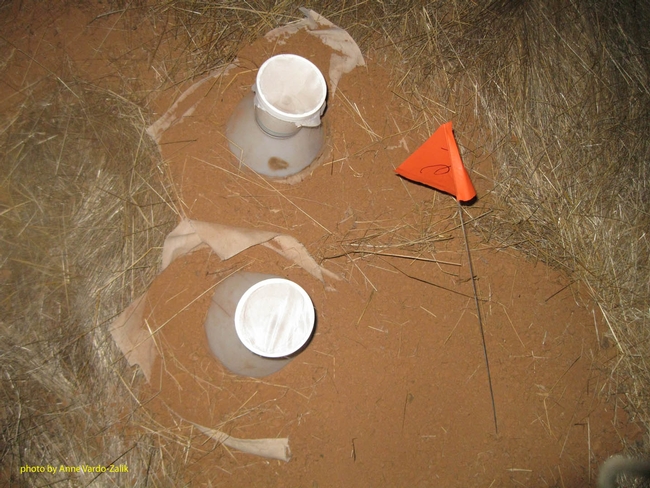This post relates back to prior ones on the topic of Lizard Malaria (Plasmodium mexicanum) and its Psychodid fly (sand flies) vector. Female sand flies lay their eggs in the feces of California ground squirrels (Otospermophilus beecheyi), so the researchers collect sand flies by placing plastic funnel traps, topped with a cardboard soup container, over the entrance to ground squirrel burrows (photo). Sand flies are nocturnal, leaving the burrows of their rodent hosts at night to disperse, mate, and/or find a blood meal.
Sand flies are not the only critters that researchers find in the traps (the sand flies are actually low in number) which includes spiders, flies, moths, crane flies, mosquitoes, and even frogs. Determining which of the two species of sand flies that one has trapped requires light microscopy at the lab.
Interestingly, the prevalence and stability of the malaria in lizards at the UC Hopland Research & Extension Center indirectly relies upon the ground squirrel population. The maintenance of lizard malaria at HREC depends upon the intricate connection of lizard host and sand fly vector, both of which are likely affected by the ground squirrel population size.
Understanding the transmission dynamics and the genetic stability of the lizard malaria parasite in the field can help to answer questions about other malarias of wildlife, shedding light upon which environmental factors contribute to the stability of transmission in natural populations. These findings might be applicable to the transmission biology of human malaria as well, highlighting factors that may play a role in increased/decreased malaria transmission.
